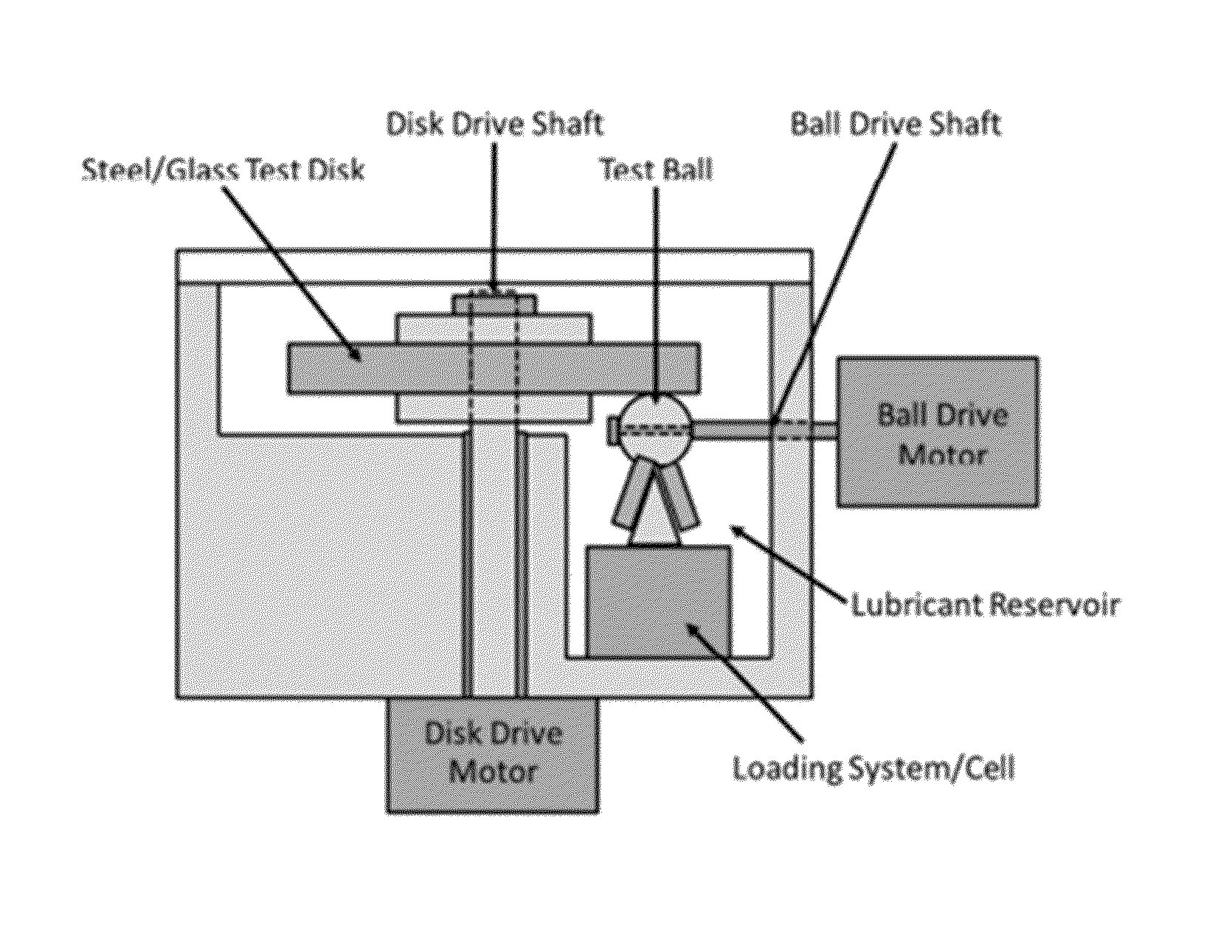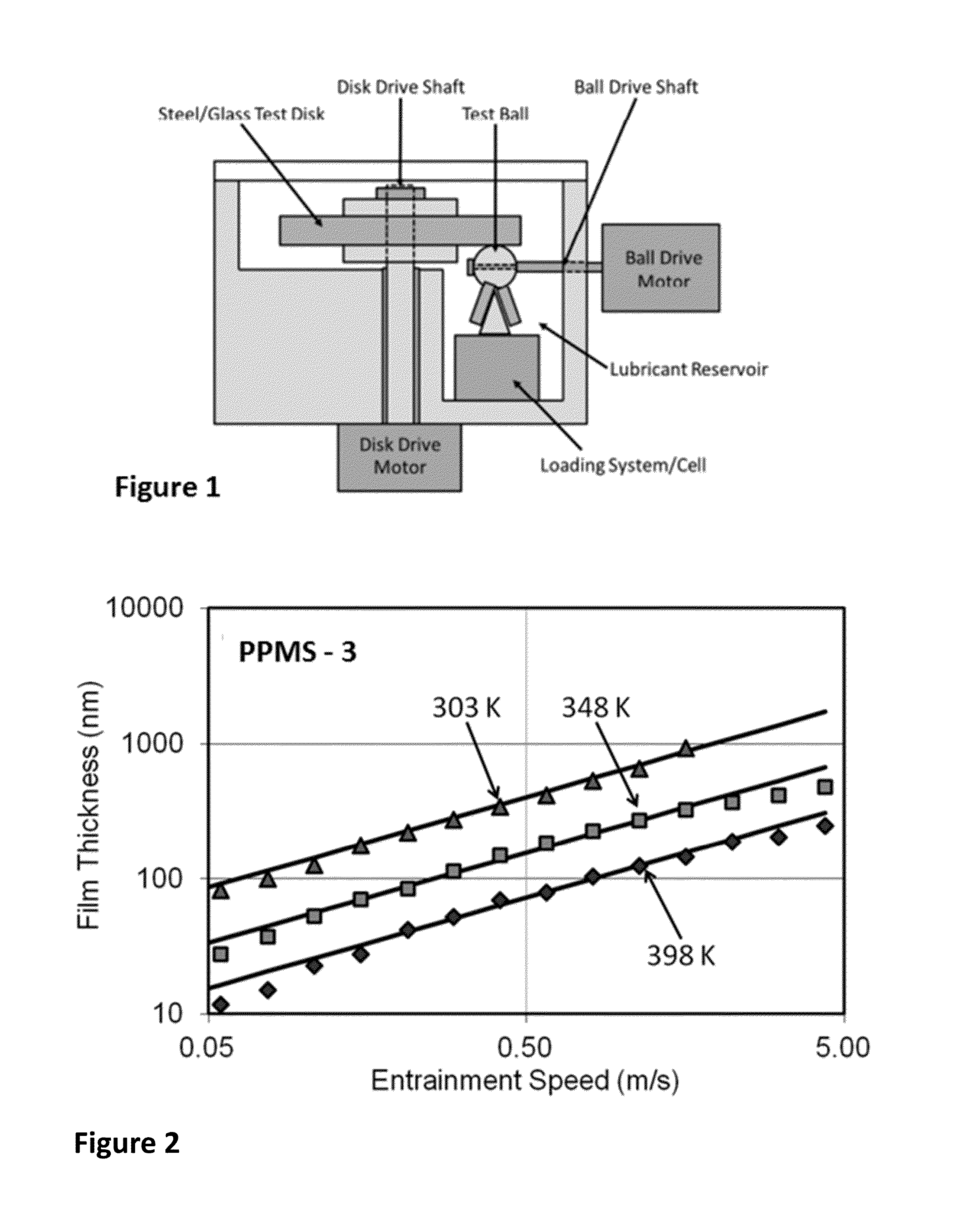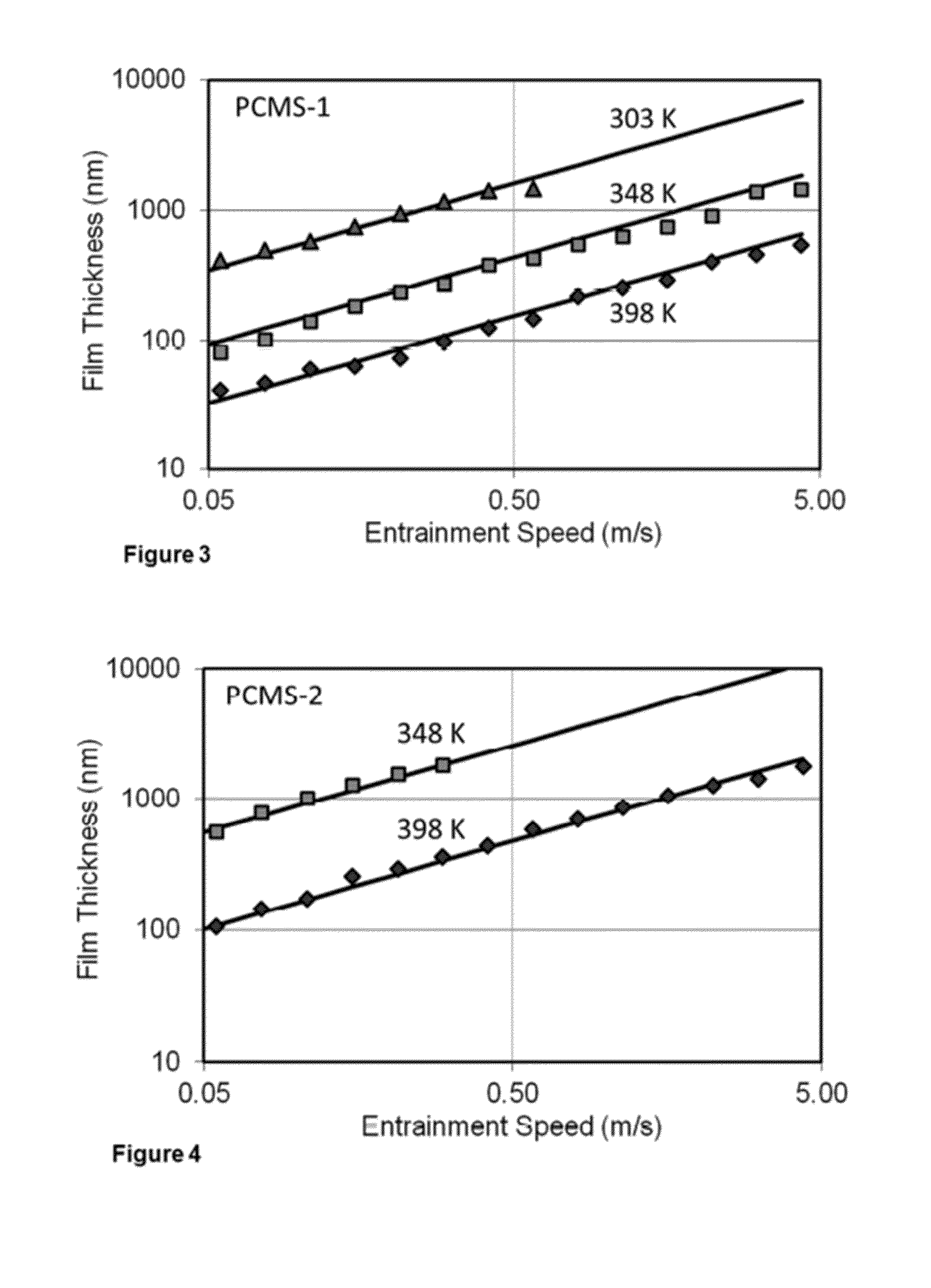Siloxane Traction Fluids with Ring-Shaped Branch Structures and Method of Using
a technology of traction fluid and ring-shaped branch structure, which is applied in the field of traction fluid, can solve the problems of reducing the effectiveness of traction drive, component weight, durability, cost, etc., and achieves the effect of increasing the interface friction and increasing the interface friction
- Summary
- Abstract
- Description
- Claims
- Application Information
AI Technical Summary
Benefits of technology
Problems solved by technology
Method used
Image
Examples
example 1
General Measurement Techniques
[0051]The physical and chemical properties exhibited by the traction fluids prepared according to the teachings of the present disclosure are measured using the equipment and test protocols or procedures described below and herein. One skilled in the art will understand that any properties reported herein represent properties that are routinely measured and can be obtained by multiple different methods. The methods described herein represent one such method and other methods may be utilized without exceeding the scope of the present disclosure.
[0052]Molecular Mass & Structure—
[0053]Molecular mass distributions of the polysiloxane samples are measured by gel permeation chromatography (GPC) using a Waters 2695 Separations Module equipped with a vacuum degasser and a Waters 2410 differential refractometer. The separation is made with two (300 mm×7.5 mm) Polymer Laboratories PLgel 5 μm Mixed-C columns (molecular weight separation range of 200 to 2,000,000),...
example 2
Preparation of Polysiloxane Traction Fluids
[0067]The high molecular rigidity noted for the PPMS samples was augmented by hydrogenation of the phenyl rings to produce poly(cyclohexylmethyl)siloxanes (PCMS). Two samples of PCMS were synthesized from the PPMS samples that exhibited the best traction performance. A sample of trimethyl silyl terminated poly(diphenylmethyl diphenyl)siloxane (PDPS) with 50% diphenyl D units and 50% phenylmethyl D units was also procured for film formation and friction testing. The increased phenyl content of the PDPS sample increases the molecular rigidity of the fluid in anticipation of greater traction performance
[0068]Four poly(phenylmethyl dimethyl)siloxane (PPMS-1 to PPMS-4), two poly(cyclohexylmethyl dimethyl)siloxane (PCMS-1 & PCMS-2) samples, and one poly(diphenylmethy dimethyl)siloxane (PDPS-1) are prepared and stored for testing and use as a traction fluid according to the teachings of the present disclosure. The trimethyl silyl-terminated poly(p...
example 3
Characterization of Polysiloxane Traction Fluids and the Use Thereof
[0071]The typical physical and chemical properties exhibited by the polysiloxane traction fluids prepared in Example 2 and labeled as sample #'s PPMS-1 to PPMS-4, PDPS-1, and PCMS-1 to PCMS-2 are summarized in Table 1 along with the properties of a conventional polydimethylsiloxane (PDMS) oil (Sample # C-1). These properties include information regarding molecular structure, mass, density, and viscosity including the percent branching, the type of branching, degree of polymerization (DP) and polydispersity (PD). The column headed percent D units indicates the percent of D units in each sample which are not dimethyl D units. Hence, the percent of non dimethyl D units in PDMS C-1 is zero as it consists entirely of polydimethylsiloxane (PDMS) oil. The percent phenylmethyl D unit content of the PPMS-1 to PPMS-4 samples includes 10%, 50% and 90%, as determined through analysis of nuclear magnetic resonance (NMR) data. Si...
PUM
| Property | Measurement | Unit |
|---|---|---|
| bond angle | aaaaa | aaaaa |
| temperature | aaaaa | aaaaa |
| temperature | aaaaa | aaaaa |
Abstract
Description
Claims
Application Information
 Login to View More
Login to View More - R&D
- Intellectual Property
- Life Sciences
- Materials
- Tech Scout
- Unparalleled Data Quality
- Higher Quality Content
- 60% Fewer Hallucinations
Browse by: Latest US Patents, China's latest patents, Technical Efficacy Thesaurus, Application Domain, Technology Topic, Popular Technical Reports.
© 2025 PatSnap. All rights reserved.Legal|Privacy policy|Modern Slavery Act Transparency Statement|Sitemap|About US| Contact US: help@patsnap.com



